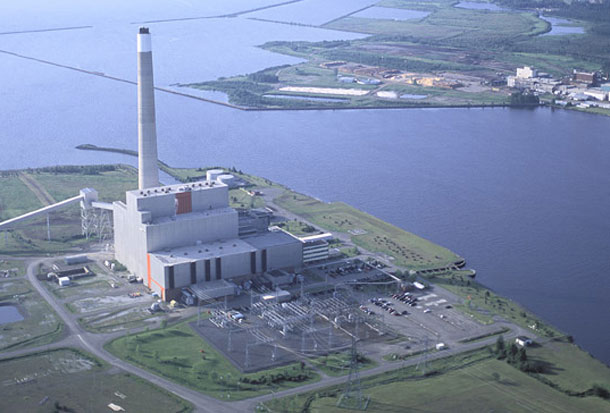
THUNDER BAY – Business – The NOMA executive has recently reviewed the results of the May 2013 meeting between the Energy Task Force, Ontario Power Authority (OPA), Independent Energy System Operator (IESO) and the Ministry of Energy and concluded that there is definitely a better understanding of the issues by both sides however, much work needs to be done to establish a robust energy future for Northwestern Ontario.
Larry Hebert, Co-Chair of the Energy Task Force states that there must be action on the OPG Coal Fired generating station in Thunder Bay. “There could be rolling brown outs by 2015”, states Hebert. In January and February the coal fired plant in Thunder Bay was needed for sixteen days in January and thirteen days in February. Without that power, Hebert shares, a lot of residents in the region would have been sitting in the dark and the cold.
Cold Weather Rolling Brownouts Likely
“We’re almost at full agreement on the load side of this issue,” said Mayor David Canfield, President of NOMA. “The government now has a better understanding that once a mine load is committed it is too late to wait for the feasibility studies and environmental processes to be compete before the OPA recognizes the load. Mine site construction takes about 18 months to two years to complete and this is not enough time to get the necessary power infrastructure to these sites especially if they are not close to an existing grid.”
There is recognition by the OPA of load increases in both the forestry sector as well as remote First Nations communities.
NOMA believes that transmission continues to be a challenge. There is concern that the 2018 in-service date of an East-West tie line put forward by the OPA is not going to be met. This could put further pressure on the current infrastructure in the region to solve its power needs and would result in the city and region suffering from rotating brownouts and blackouts.

“NOMA has always advocated for a looped road, rail and utility corridor system for the Ring of Fire,” said Larry Hebert. “A looped system will add to the ability to service more remote First Nations communities and resource development in the far north. This also provides options if one corridor is down as a result of storm conditions.”
It is also predicted that another generating station is likely to be needed for the Dryden area to handle increased load demands from mining in the area. During the winter, hydro power production is reduced from lower water levels, informs Hebert.
The supply side of the energy issues continues to be of the biggest differences between the OPA and Energy Task Force. The OPA believes some mine sites will develop their own power generation reducing their need to run power from the grid. While the Energy Task Force concedes this may be true in some cases, most companies want to be able to connect to the grid.
“The lack of availability to do this may scare some companies from starting up these mines,” said Canfield. “The province has to understand that the growth and wealth generator in this province will be rural and northern development. The rest of the Province had grid development for the common good of the citizens of this province and it’s about time the northwest part of this province be afforded the same opportunity,” added Canfield.
The OPA and IESO believe that imported power from Manitoba and Minnesota will be sufficient to meet the power needs of the northwest. NOMA is concerned that the two failed agreements between the Province of Manitoba and the Government of Ontario that led to settlements in favour of Manitoba in the past will further impede the ability to make a power agreement work. Manitoba’s current supply is committed to Minnesota, Saskatchewan and the Dakota’s. Power may be available from Manitoba by 2025 but this timeframe will not meet the immediate needs.
NOMA is urging the Government of Ontario to keep the Thunder Bay Generating Station operating at full capacity. The option of ensuring a power supply using the East- West line is susceptible to outages caused by weather events or forest fires. As a result of extended periods of frigid temperatures this past winter, the Thunder Bay Generating Station had to operate at a level exceeding the power available from the East-West line.
In the event the Thunder Bay Generating Station is closed, the city would likely see rotating brownouts and blackouts which would mean parts of the area would experience power outages for periods of time. The people of this region should not be faced with the possibility that the basic necessity of heat may not be available in the cold of winter.
“This would not be acceptable in any other part of the province and is certainly not acceptable here,” said Hebert.
Hebert also encourages the OPA to look at revenue potential of the Thunder Bay Generating Station.
“The OPA is so focused on the costs of converting the Thunder Bay Generating Station that they’re missing the opportunity to create a revenue stream from the plant,” said Hebert. “The $400 million figure they use is only the cost side. Based on the Energy Task Forces’ analysis, over a 10-year period, there is a significant profit associated with running the station,” added Hebert pointing out that with the anticipated power needs growing in this region, the stability of power provided by the generating station will be required.













